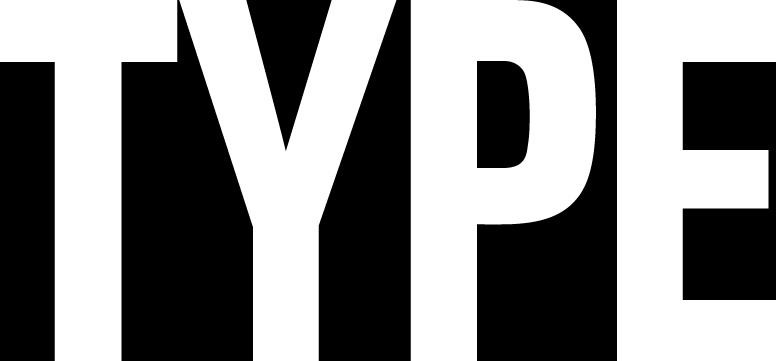Chester Jenkins: The Tale of a Typeface Found
The Story of How a Forgotten Typeface was Rescued from the Archives of Syracuse University: An Interview with Chester Jenkins.
The fresh, early days of 2017 saw the debut of a new identity for Syracuse University designed by Michael Bierut with his team at Pentagram. The “Fightin’ Orange” received the perfectly executed mix of clean and efficient design we’ve come to expect from Bierut’s office.
The iconic hero that has emerged from this project however, is not the perfect shade of the school’s bright orange color, or how it eloquently executes the expression of a deeply rooted academic institution; it’s Sherman, an original typeface developed specially for this project that eloquently represent the past, present, and future of Syracuse University.
To share the story of Sherman with the world, Dress Code produced a video with interviews and insight from the design team and Syracuse University itself.
In developing the early visual “language” for the project, Bierut and his team was searching for a central design tool that could speak to the unique heritage of Syracuse. To their surprise, they discovered that the the University had a long-standing relationship with Frederic Goudy, famed type designer responsible for some of the most iconic typefaces of the 19th Century.
Not one to miss such a valuable design opportunity, Bierut turned to Chester Jenkins to distill what could be found in the archives to create Sherman. We asked Chester about his experiences in designing and developing Sherman and how he approached bringing a nearly forgotten piece of type history back from the frays of memory.
Chester Jenkins, type designer. Jenkins works as founder of Vllg in Brooklyn, NY. He also produces fonts through Constellation, a foundry he runs with his wife Tracy Jenkins.
TYPE: When you were first approached about the project, what were your first impressions?
Chester Jenkins: When Julia Lemle (a member of Michael Bierut’s team at Pentagram) first contacted me, the project was described as “digitizing” the Spencer Old Style type; a typeface Frederic Goudy had drawn for M. Lyle Spencer, Dean of the School of Journalism at Syracuse University in the early 20th Century. I was intrigued because Goudy is, and has always been, one of my typographic heroes, and also because the only scintilla of the Spencer Old Style ever published is a pencil sketch by Goudy of “phasg”.
““I was intrigued because Goudy is, and has always been, one of my typographic heroes.””
At first, it seemed that Syracuse might hold the rest of the drawings, and how cool would it be to give life to Goudy's drawings? As it turns out, the Spencer Old Style may simply exist as “phasg” in pencil on paper, with nothing else. Jesse Reed (another member of Michael’s group) spent a couple of days in Syracuse looking at everything they had in the library pertaining to Goudy. There was nothing else on Spencer Old Style.
With such an early challenge to your expectations, how did you find the right direction for the project?
What Syracuse does have is two original sets of Goudy type matrices, including Sherman. That story is covered by William La Moy in the Dress Code-produced video, [see above] and Mr La Moy also wrote about it in detail for the journal “Printing History.”
Syracuse holds the matrices and a set of types, as well as proofs pulled from the types, and examples of the types in use by the publisher and commissioner of the types, Frederic Fairchild Sherman. We also have Goudy’s notes on the type from his own writings. (He felt he made it to set too tight.)
With a better sense of the project at hand and some inspirational new source materials to pour over, it sounds like the project should have been pretty straight forward from there; however, this was apparently not the case.
My first design draft of the Sherman type was a close re-creation of the original types, including the spectacular oldstyle numerals and loads of inconsistencies and oddities.
It was clear to Michael and his team that—while accurate—the resulting type would not be as widely useful as they needed it to be. So I went back into my outlines and remade the type in a contemporary fashion. I worked on a heavy master weight and tried out some sans serif ideas, which gave us permission to stray from a straight revival to more of a re-imagining of the design.
““It was clear to Michael and his team that—while accurate—the resulting type would not be as widely useful as they needed it to be.””
Let’s talk about your process. In the beginning, how important was the library archive? How much time did you spend there amongst the books and materials?
I went up to Syracuse just once, and took my own Epson V600 scanner with me, knowing I could capture incredibly high resolution images using it. I wanted to scan the matrices—which ended up being useless to my ends, but it was amazing to behold them. I also scanned the wet and dry proofs which had been pulled by the University’s print shop, as well as some of Sherman’s original works printed using the types.
I also wanted to eyeball everything in person and to meet Mr. La Moy, who is an authority on Goudy. I didn’t get into the library’s stacks, but worked with Mr. La Moy; he brought out things relevant to the project.
After the research, what was the most challenging thing about translating Goudy’s designs? Did you have to turn it around quickly?
The biggest challenge was making a type which was clearly in the spirit of Goudy’s 1912 design, but suited to 2016 technologies and tastes. It was a somewhat quick project, but commissioned projects usually are. I made it a bit harder on myself by proposing the addition of the sans family. In total, the project took 5 months and a day from my visit to Syracuse until delivery.
““The biggest challenge was making a type which was clearly in the spirit of Goudy’s 1912 design, but suited to 2016 technologies and tastes.””
Obviously it was a very collaborative process working with Michael Bierut at Pentagram and the staff at Syracuse University, what was your back and forth like? Were you constantly testing and using the typeface along the way or aware of the design contexts in which it would be used?
I was not proofing the types in the graphic program (Jesse Reed was doing that, and giving me feedback). I didn’t see the full program in a presentation until my work was 2/3 finished—which is probably for the best. As a former graphic designer, I can sometimes “neutralize” aspects of my type designs, considering how they will be used. Modernism, basically... But in this case, it would have been bad to smooth too many of the edges, as those were the connections back to Goudy and the original Sherman.
I have done a few projects with Michael over the last decade-and-a-half, so I hope he knows what he can expect when choosing me as a collaborator. I really did feel a huge amount of trust from Michael and his team, for which I am truly grateful.
It doesn’t seem to be that there are any additional weights of the typeface beyond the original weight that Goudy had produced in matrices, is a family with a range of weights something you considered?
Actually, there are now two weights in roman and italic, serif and sans: 8 fonts total, versus the single roman Goudy had cut and cast for his client, Frederic Sherman. (The film made shows me drawing some italic letters; that was actually me working out the italic design live on camera.)
There may be other weights developed for the University; this is their design, and will never see commercial publication.
How large of a design challenge was this for you personally as a type designer? Were there any unexpected surprises that came up throughout the project that challenged you?
I am not really known for serif designs outside of Galaxie Copernicus, which was a collaboration with Kris Sowersby. I am also not into “historical reenactment”; Copernicus is a reimagining of Plantin, not a revival. I have created designs based on memories of older types, or by extrapolating from one or two letters without any additional research or reference. (I would have been quite happy basing a design on the “phasg” Spencer sketch.) Most of my designs are original sans serifs: Apex, Polaris, Brooklyn, Cooper Hewitt...
While I had Goudy’s original typeface as a starting point, where I ended up was a reinterpretation of Goudy’s idea, not a revival of his letters. The biggest surprise was that there was no Spencer type to revive; the best surprise was that there was the amazing Sherman type we could work with.
““While I had Goudy’s original typeface as a starting point, where I ended up was a reinterpretation of Goudy’s idea, not a revival of his letters.””
How do you think Sherman will stand the test of time? Do you think this is something Syracuse University will be able to rely on in their branding for a long long time?
I truly hope so. It does feel like the University has embraced the types, and understands that they are unique to the the University. I also hope that the design doesn’t prove to be “very 2017,” that the look of the type doesn’t become outdated—too quickly, at least. Type, like music or fashion, has a tendency to age; a typeface is frozen in time while new types are developed, reflecting their zeitgeists.
So, yes, I hope and believe that the Sherman types will serve Syracuse University for the foreseeable future. When I look back at the work Michael Bierut has done over the past few decades, it is amazing how well everything holds up; he has always let function drive form, and I feel that the Syracuse University identity program follows this line.
““Type, like music or fashion, has a tendency to age; a typeface is frozen in time while new types are developed, reflecting their zeitgeists.””











